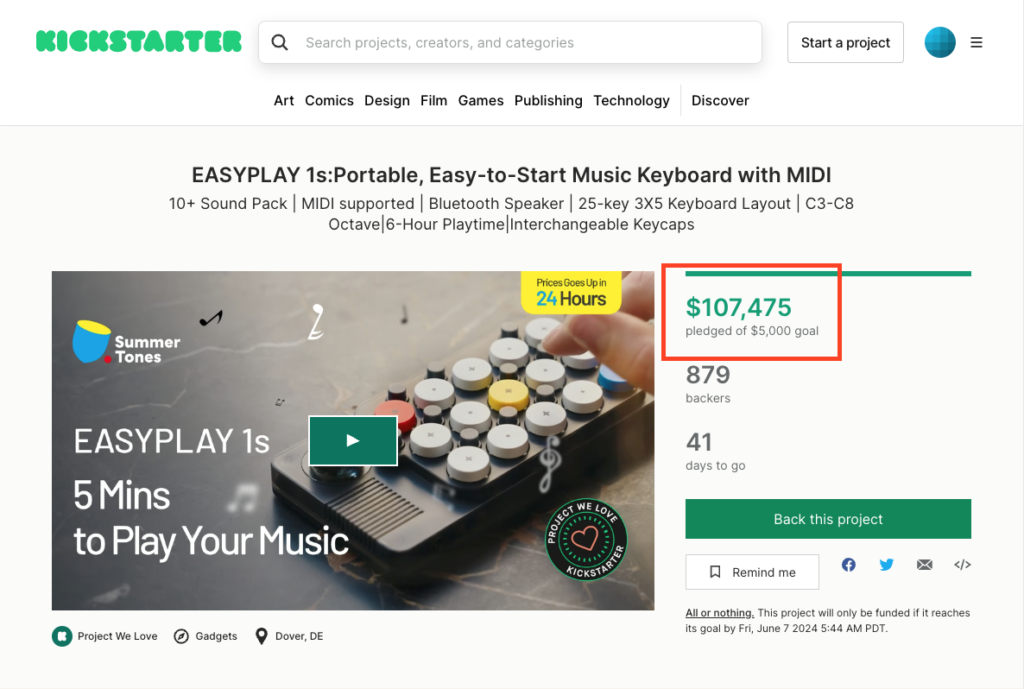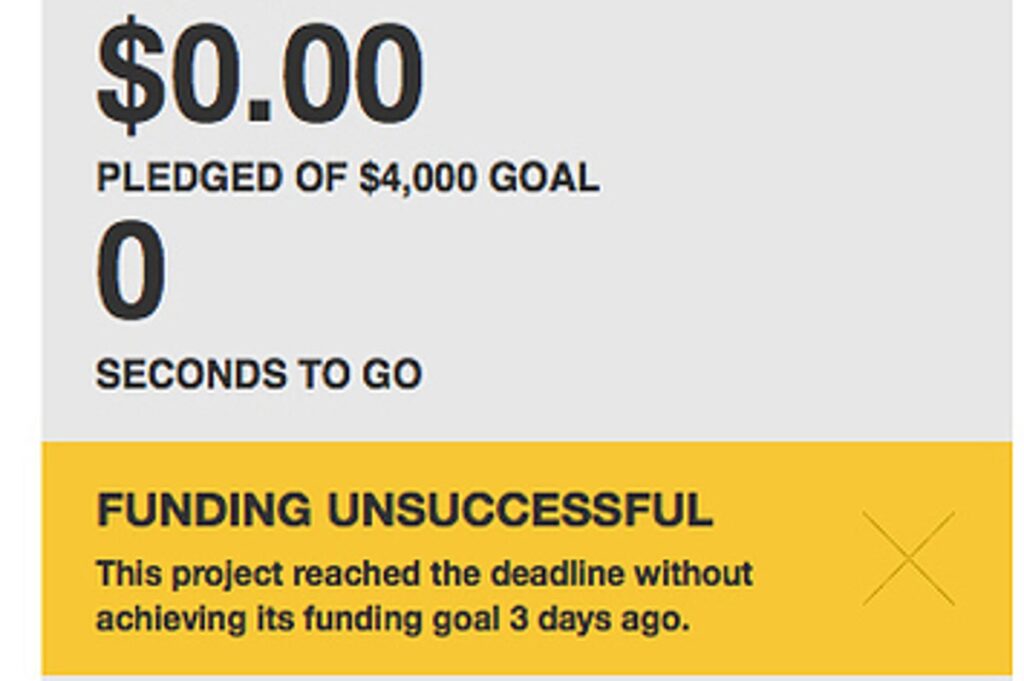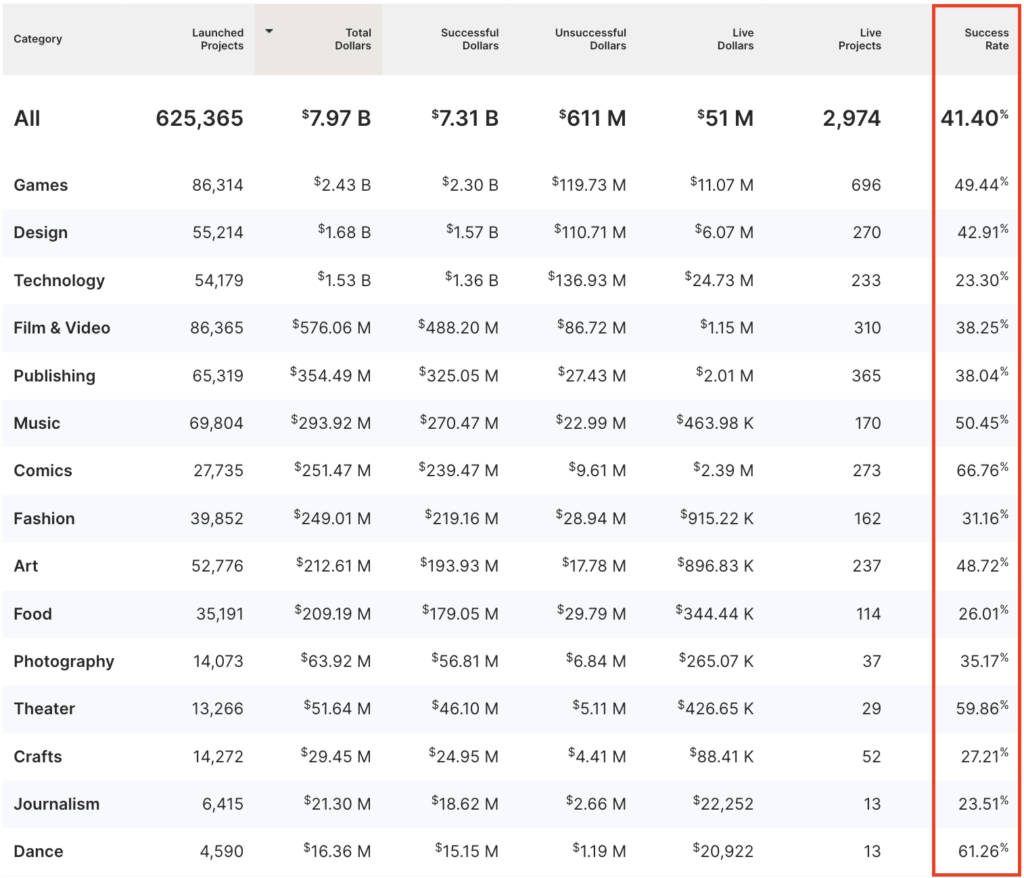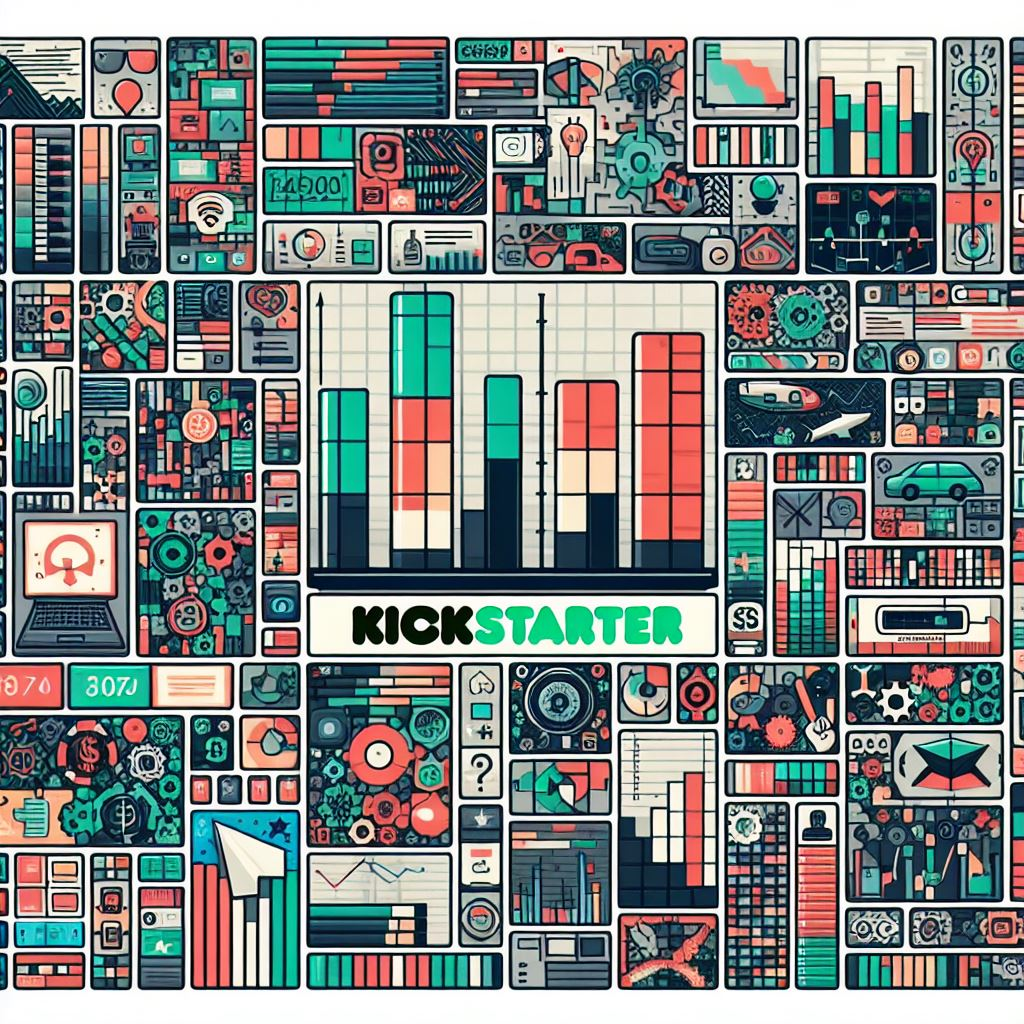Kickstarter has helped startups raise billions (with a B) of dollars in funding, but launching one for the first time can be a bit daunting. One common question we get is “How do I choose the right Kickstarter Funding Goal?”. Well buckle in and I’ll tell you.
But… before I do that let me quickly mention that we help brand new startups and established companies set and beat their Kickstarter funding goals, just email us at hello@machinegrowth.co to get started. Okay, plug finished.
What is a Kickstarter funding goal?
First let’s start with the basics (feel free to skip ahead if you already know this). The Kickstarter funding goal is the amount of money that a campaign needs to raise in order to be considered successful.
The Kickstarter minimum funding goal is $1 while the maximum funding goal is $100,000,000.

The Kickstarter funding goal is chosen by the project creator before project launch – usually based upon factors such as project costs and desired margins, but there are other variables, such as the Kickstarter algorithm, to account for as well.
What happens if Kickstarter projects don’t reach their funding goal?
If a Kickstarter campaign doesn’t reach its funding goal by the end of the campaign window, the backers will receive a full refund and the project will close unsuccessfully.

This format offers protection for both the project creator and the backers. The project creator isn’t on the hook for bringing their project together without sufficient funds, and the backers are at less risk of losing their money on a project that is likely to fail.
What happens if you raise more than your goal on Kickstarter?
Overachieving your goal SHOULD be your goal. If you’ve passed your goal and the backers keep coming, congratulations, you’ve nailed your product market fit, and it’s time to increase your production quantities, and start thinking about adding additional rewards to keep the momentum going.
You should also think about how you can carry on the momentum beyond Kickstarter by establishing a brand, promoting through PR, and other marketing efforts.
Why is it important to set the right Kickstarter funding goal?
The Kickstarter setup is pretty darn quick and easy, but lobbing a random funding goal in can have some serious consequences.
As a creator you don’t want to be on the hook for a project if you don’t have the proper money to make it worth your while – whether that’s simply covering the costs or gaining a profit.
On the flip side you don’t want to set an unrealistic goal and lose backers’ faith in your ability to finish the campaign successfully and actually bring the product to market.
What percentage of products reach their funding goals on Kickstarter?
As of writing this, about 41% of Kickstarter projects reach their goals. Take it one layer deeper, focusing on technology products and only about 23% of projects reach their goal.

While this may be seriously discouraging to some founders, keep in mind that it’s far better to understand whether or not your product is a dud early on before you’ve gone and ordered inventory and spent a ton of money. Of course your product is no dud.
Well you’re not quite out of the woods yet, you see, good products can also have unsuccessful Kickstarter campaigns if creators don’t launch properly. There are some simple tactics that can drastically improve your chances of hitting your funding goal, and one of the most important elements is setting the right funding goal in the first place.
How to calculate your funding goal for Kickstarter
Calculating a target Kickstarter funding goal is relatively straightforward but you need to dig into some numbers first.
- Calculate your fixed costs
Your fixed costs ARE NOT affected by the number or products you sell. Costs for developing a new hardware product such as prototyping for example would not be affected by the quantities that you sell. Spending $10,000 for tooling of a mold for injection molding would be another example.
- Calculate your variable costs
Your variable costs ARE affected by the number of products you sell. Manufacturers will charge based on units for materials that go into each product. Inventory, packing, and shipping will also go up and down with the quantities that you sell.
- Calculate your average order value (AOV)
Your product pricing should be determined based on market research and positioning – try to set it competitively to other key players, and be aware of who your target customer is. The average order value (AOV) requires you to look at the various reward tiers, discounts and estimate how much of your product you expect to sell. Total up all sales and calculate the average and boom – you’ve got your average order value.
- Calculate your Break Even Goal
You’re almost there. First let’s note just how much it we will need to bring in to break even (covering all of our costs) by plugging in the above numbers to the equation below:
Break Even Amount = (AOV x Fixed Costs) / (AOV – Variable Costs)
- Calculate your Total Funding Goal
Now if your goal is just to cover your costs you can stop at the above step, but most successful founders will build in a profit margin to make the business truly worthwhile. To do this, take the break even amount and add a percentage of that total on.
Total Funding Goal = Break Even Amount x (profit margin % + 100%)
Should you set your Kickstarter funding goal low?
Now that you’ve calculated what you need to raise to make your product happen, there’s something I need to tell you. Some of the most successful companies actually start with modest Kickstarter funding goal.
By setting the goal lower you increase your chances of hitting your target quickly (or at all). In fact, the most successful companies on Kickstarter aren’t truly using Kickstarter out of a need for funding, rather they are using it as a marketing tool.

Hitting your Kickstarter funding goal in 48 hours
There are a number of strategies that can almost guarantee you hit your goal in 48 hours which has the effect of boosting your campaign since backers favor products that are already funded, and Kickstarter’s algorithm tends to feature these products too.
Today, common Kickstarter funding goals range from $5,000 – $20,000. When they hit goal in the first day or two, they accelerate past their goal and it’s not uncommon to see them reach $100,000 – $1,000,000.
Ways to increase funding on kickstarter after goal is met
If you are launching a new product, you need to look at Kickstarter as just the beginning. If you do go with a lower goal, and reach that goal, but need additional funding, you can (and should) launch on other platforms.

If you haven’t already built a website, it’s time to do so, and list your product on an Ecom platform. Amazon and Indiegogo are other options for bringing your product directly to the consumer.
Need help with your upcoming Kickstarter launch? We can help you maximize your campaign, hit your goal, and grow beyond Kickstarter. Just visit machinegrowth.co or email us at hello@machinegrowth.co when you’re ready to talk!

Comments
One response to “Setting the right Kickstarter funding goal”
[…] Speaking of goals, these should be intentional and follow the narrative of the launch. Setting a slightly lower goal will increase the likelihood that you achieve it, which can go a long way when it comes to giving backers confidence, but set your goal too low, and you might find yourself unable to bring your product to market at all. Learn more about setting you Kickstarter Funding Goal. […]